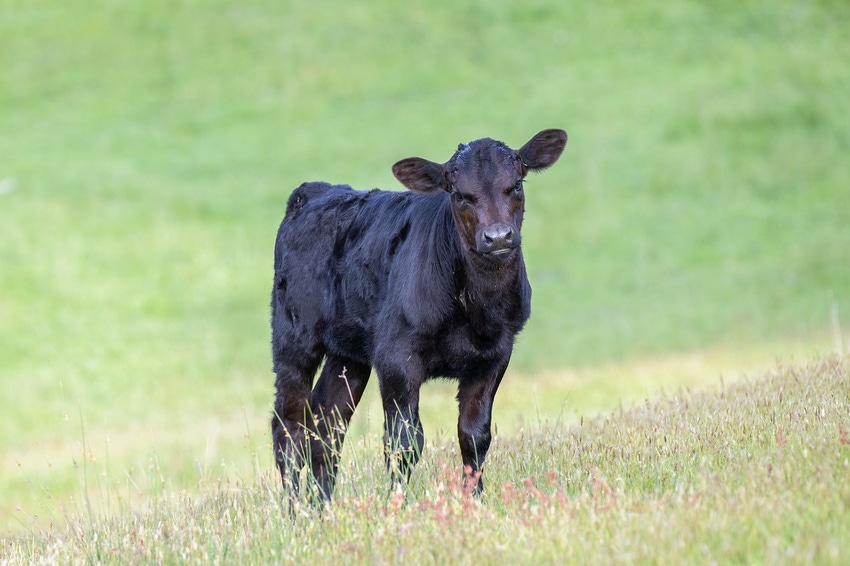Early weaning calves to reduce nutrient needs during drought
Early weaning can also improve calf performance due to a more nutritious diet following weaning.
July 21, 2023

Early wean calves to reduce cow herd nutrient needs to match drought-limited feed resources, says Patrick Davis, University of Missouri Extension livestock field specialist. In addition, early weaning can improve calf performance because calves are put on a more nutritious diet following weaning.
Davis discusses strategies to help cattle producers be successful in early weaning calves:
“Age is a consideration when early weaning calves,” says Davis. Calves have been weaned as early as 60 days, but this is usually not practical in most beef cattle operations. Davis suggests it is more practical to early wean calves at approximately 120 days of age, which is right now for most spring-calving cows.
“Getting calves to consume their feed ration as quick as possible once they are weaned is key to a successful early weaning program,” he says. One way to aid in this is creep feeding the calves three to four weeks before weaning to get them adapted to a diet similar to their weaning diet.
In addition, top-dressing the initial calf weaning diet with good quality hay for the first three to five days may help the calves improve diet consumption more quickly after weaning. Once calves are properly consuming the weaning diet, daily consumption should be from 2.75% to 3.25% of their body weight.
“Early weaning calves requires more attention to detail when it comes to developing a feeding program,” says Davis. Diets need to be palatable, free of dust and formulated to meet all the calf’s nutrient needs.
Adding water or liquid supplements such as molasses to the diet will help with dust control, reduce sorting and, in the case of the latter, improve palatability. Make sure calves have free choice access to a mineral, trace mineral and vitamin supplement formulated to meet their needs. Davis suggests visiting with your local MU Extension livestock specialist to help develop a proper feeding program for your early weaned calves.
“Proper animal management and weaning area setup aids in a successful early weaning program,” he says. Sort calves and allocate them to the weaning areas based on size to cut down on competition during feeding. Since newly weaned calves like to walk the fence line, Davis urges putting the water and feed there to aid in those calves’ intake of these things. Make sure water is cold and clean. Water equipment should be cleaned regularly. Davis suggests that calf weaning areas be small and have proper shelter and dust control.
“A proper cattle operation health program is important to cut down on morbidity and mortality of early weaned calves,” says Davis. He urges consultation with your local large-animal veterinarian and developing a proper health program for your cattle operation before early weaning calves. Some things that should be considered in the program:
Process calves, which includes tagging, branding and castration at least 14 days prior to weaning.
Provide proper internal and external parasite control, including fly control.
Provide proper vaccinations prior to weaning.
Monitor calves daily for symptoms of respiratory disease, digestive disturbances, scours, coccidiosis and reduction of dietary intake; work with your veterinary to treat these symptoms.
“One benefit that early weaning does to a cattle operation is improve forage availability to cows,” says Davis. As the rains come, the forage will begin to regrow. Davis urges early weaning calves to improve forage resources for the cow herd as we move into fall and winter.
You May Also Like


.png?width=300&auto=webp&quality=80&disable=upscale)
